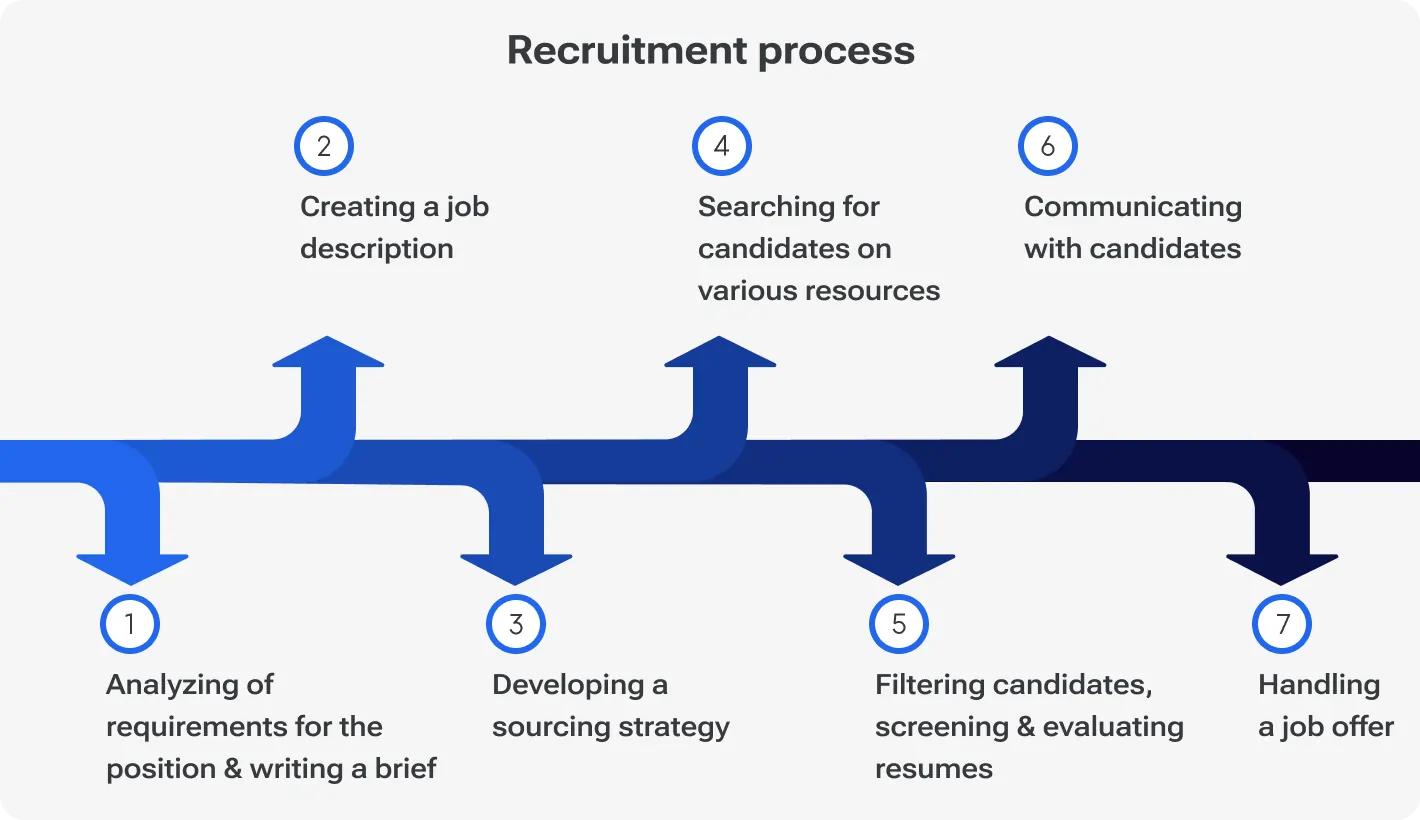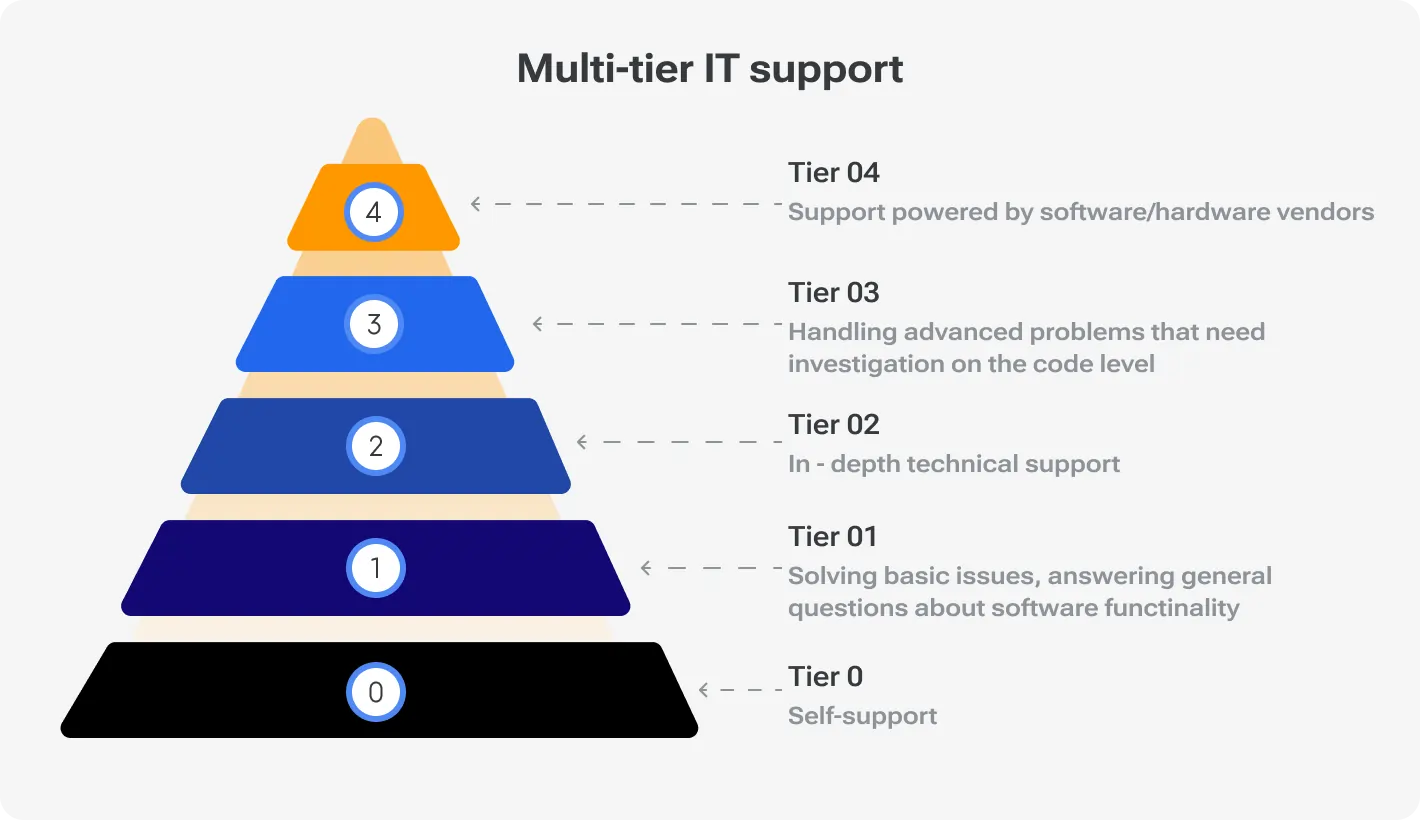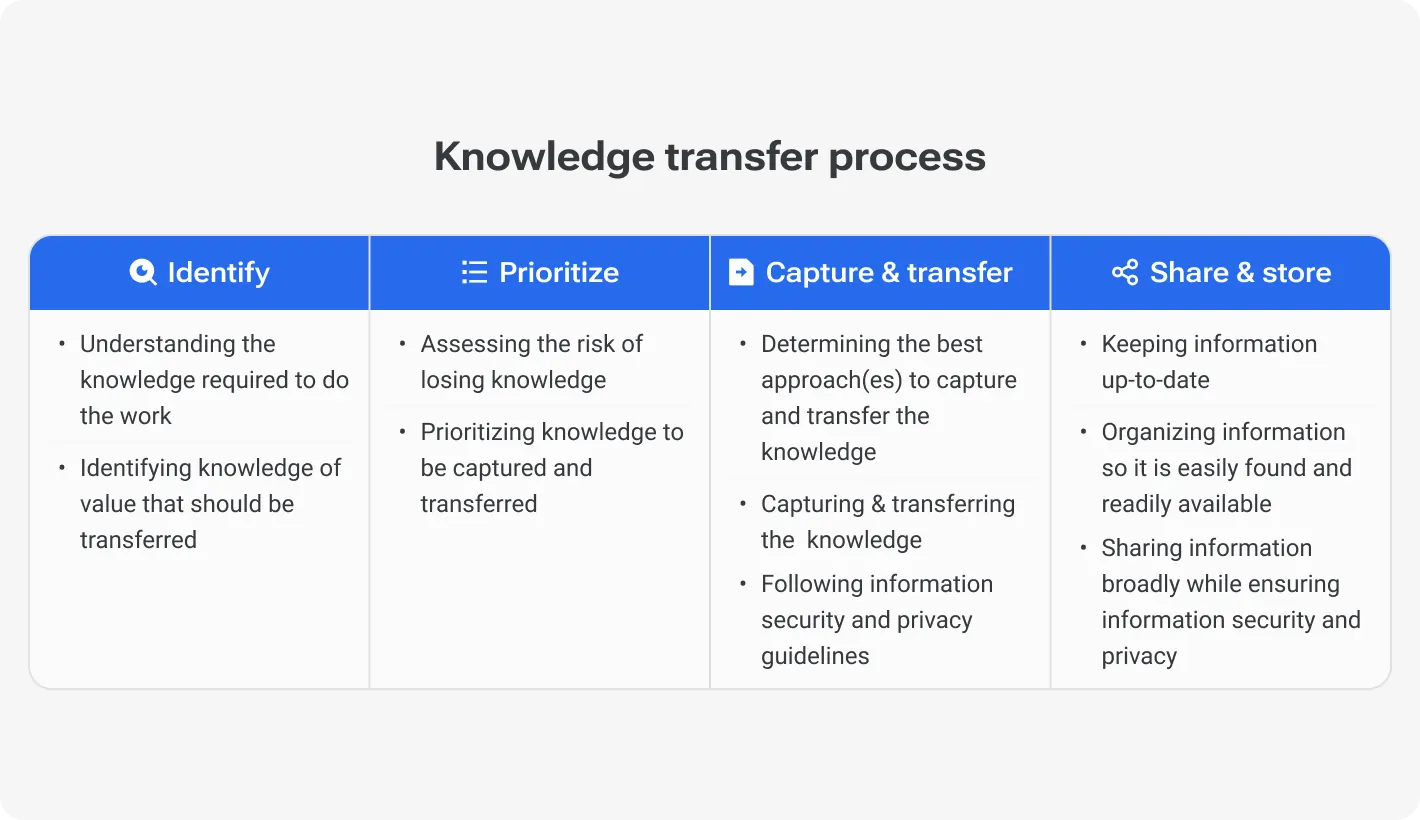Outsourcing to Czechia

How much does it cost to hire developers in Czechia?
Dec 2nd 25 - by Devico Team
Find out how much it costs to hire software developers in Czechia in 2025. Compare hourly rates, roles, and factors that impact pricing.
Hire
Hire by role
Hire Front-end developers
Hire Back-end developers
Hire Full-stack developers
Hire Android developers
Hire iOS developers
Hire Mobile developers
Hire AI engineers
Hire ML engineers
Hire Automation QA engineers
Hire Blockchain developers
Hire Data engineers
Hire Cloud engineers
Hire by skill
Hire JavaScript developers
Hire TypeScript developers
Hire Ruby on Rails developers
Hire React Native developers
Hire Flutter developers
Hire Golang developers
Hire React.js developers
Hire Python developers
Hire PHP developers
Hire .NET developers
Hire Java developers
Hire Laravel developers

BOT
August 16, 2024 - by Devico Team
Summarize with:
Outsourcing failures can be costly and damaging. Recall Boeing’s 787 Dreamliner project. Boeing outsourced much of the production to global suppliers but faced severe delays and cost overruns due to mismanaged expectations and poor coordination.
The Build-Operate-Transfer (BOT) model in IT outsourcing may become a perfect solution since it provides a structured approach that mitigates many common risks associated with outsourcing. It involves an external partner building the necessary infrastructure, operating it for a set period, and then transferring control back to the client.
However, the BOT model isn't a "silver bullet". Unforeseen challenges can crop up throughout the lifecycle, potentially derailing projects and diminishing the expected return on investment.
Let’s explore the common challenges faced when implementing the BOT model and provide practical solutions to overcome them. This guide aims to equip IT professionals, CIOs, and business leaders with the insights needed to navigate the complexities of BOT projects.
The build phase is the foundation, basics, ABC. However, poorly navigating this critical stage can kill your project. How?
The typical challenge here is unfamiliarity with the local talent market. Another one is a high competition for tech talent. This is especially true in tech hubs where demand often exceeds supply.

Leverage local recruitment agencies: Local recruitment agencies have nuanced insights into the job market and can effectively target potential candidates. They understand local salary benchmarks and can navigate cultural nuances. In 2023, ManpowerGroup released their latest workforce trends report. The company is sure leveraging local expertise can reduce hiring times by 20%.
Offer competitive packages: We can’t help but admit: well-being matters more than ever. So apart of salaries, offer comprehensive benefits, including health insurance, retirement plans, professional development opportunities, and work-life balance initiatives. Glassdoor found that 63% of candidates consider benefits and perks among their top considerations before accepting a job offer.
Ensure remote work: Expanding your search beyond local talent pools by embracing remote work can significantly increase your candidate pool. Zoom or Google Meet for video conferencing, Slack or MS Teams for team communication, and Asana or Jira for project management— all these tools ensure comfortable remote collaboration.
A robust IT infrastructure comes as one of the most common second-level BOT implementation challenges. Especially if you lack experience navigating local regulations or technical specifications.
Partner with local providers (again): Locals are almost always helpful since they offer essential local expertise and can tip you off on cultural nuances. Regarding IT service providers, they can handle logistics more effectively and ensure compliance with local regulations. For instance, partnering with a local data center can enhance data sovereignty and reduce latency issues.
Use scalable cloud solutions: Cloud platforms (AWS, Azure, Google Cloud) offer a flexible, scalable environment that can grow with your business needs. These platforms provide various services, from data storage to AI and machine learning capabilities, allowing for dynamic scaling. Flexera's 2021 State of the Cloud Report highlights that 92% of enterprises have a multi-cloud strategy, emphasizing the reliance on cloud solutions.
Plan for future growth: Implement scalable infrastructure designs, such as microservices architecture, which allows individual components to be scaled independently. This approach ensures that as demand increases, the system can scale efficiently without significant overhauls. A well-planned infrastructure can significantly reduce future scaling costs and secure your growth.
As a decision maker, you should align the Build phase with business objectives from the outset. Misalignment can lead to resource wastage and missed strategic opportunities. This is not to mention missing really worthy talents and, of course, money.
Clear communication: We are not tired of repeating: robust communication channels are key. They ensure project goals and expectations are consistently communicated to all stakeholders. Apart from Slack and Microsoft Teams, you can use Jira and Confluence to document project plans, track progress, and maintain alignment. Regular status meetings and updates help keep everyone on the same page.
Set measurable goals: Define SMART (Specific, Measurable, Achievable, Relevant, Time-bound) goals that align with the broader business strategy. Use KPIs to monitor progress and make data-driven adjustments. In 2016, the Project Management Institute found that projects with clearly defined goals are 2.5 times more likely to succeed. A lot of water has passed under the bridge since then, however the data is still current.
Involve key stakeholders: Engage stakeholders from various departments early in the planning process. This way, you ensure their needs and perspectives are taken into account. This collaborative approach fosters buy-in, reduces resistance, and helps identify potential issues early.
Once the IT solution is up and running, the focus shifts to ensuring its smooth and efficient operation. And well, there are pitfalls, too. So do solutions, since maintaining peak performance and mitigating potential risks requires a proactive approach.
People get used to good service quickly. This is especially true of IT strategy-related projects. In this light, maintaining high service levels turns into a nightmare sometimes since this can be challenging due to fluctuating demand, system issues, and resource constraints.

Performance monitoring: Implement monitoring tools (e.g. Nagios, Datadog, or New Relic) to continuously track system performance. These tools provide real-time insights into system health, detect anomalies, and alert the team to potential issues before they escalate.
Regular reviews: Pencil in regular performance reviews to assess service levels against predefined metrics. Use data from monitoring tools to identify trends, areas of improvement, and potential risks.
Continuous improvement: Everyone likes to show off their achievements. Yet, this requires a dedication to continuous improvement. So, encourage feedback from team members and stakeholders. Consider the Kaizen methodology to make incremental improvements.
Devico successfully implemented a continuous performance monitoring and improvement system for a fintech client. Our experts went the extra mile and conducted weekly performance reviews. This way, we reduced system downtime and improved transaction processing speeds. What else? Mode App has hit a 70% level of repeat buyers while the project got an FCA registration and joined CryptoUK, a self-regulatory trade association in Britain.
Unforeseen outages cost businesses an average of USD 8,850 per hour. These disruptions significantly impact user experience, productivity, and ultimately, your organization's bottom line. That’s why optimizing processes for efficiency and effectiveness is a continuous challenge in the operate phase. This involves streamlining workflows, eliminating bottlenecks, and ensuring that resources are used effectively.
Implement automation tools: Apply Ansible to configuration management, Jenkins to CI/CD pipelines, and UiPath to robotic process automation (RPA). These tools automate manual data entry, system configuration tasks, and other repetitive processes. The automation, in turn, minimizes errors and speeds up processes.
Conduct regular audits: Regularly audit processes to identify inefficiencies and areas for improvement. We’ve covered the topic of key performance indicators (KPIs) in a series of articles. Just kindly remind me that vital KPIs of the entire project are ROI and quality/cost of hire, turnaround time, error rates, and resource utilization when it comes to the operate phase in particular.
Continuous improvement (one more time): If you skipped the previous subtitle, we are here to reiterate: constant improvement is our bread and butter. Implement frameworks like Six Sigma and encourage a growth, life-long learning mindset. For this reason, provide training and development opportunities for employees to enhance their skills and contribute to process improvements.
Hold regular brainstorming sessions and workshops to gather ideas for improvement. Don’t judge, even the craziest ideas count.
Recognize and reward team members who contribute valuable process improvements.
Use data-driven decision-making to prioritize and implement changes.
Managing risks is essential to ensure operational continuity and protect against potential threats. The most common risks: system failures, security breaches, and unexpected disruptions.
Create a risk management plan: Develop a comprehensive risk management plan that identifies potential risks, assesses their impact, and outlines mitigation strategies. Include both preventive measures and contingency plans.
Regular risk assessments: Conduct regular risk assessments to identify new risks and evaluate the effectiveness of existing controls. Use ISO 31000 to guide the risk management process. This certification is appropriate for all members of the BCMS or ISMS committee. It validates competence and understanding for developing and managing a custom risk-management methodology. With actual knowledge, your staff will be able to come into their own even “in time of test”.
Establish contingency plans: Develop and test contingency plans for critical scenarios such as system outages, data breaches, and natural disasters. Ensure that all team members are familiar with these plans and know their roles in executing them.
This stage marks the transition of ownership and operational responsibility from the outsourcing partner to your internal IT team. And your long-term success depends on the quality of this phase.
Transferring knowledge from the outsourcing partner to the internal team is a critical yet challenging aspect of the transfer phase. The internal team should fully understand the systems, processes, and technologies used during the BOT project. This is exactly the goal of the stage.

Comprehensive training programs: Conduct in-depth training sessions covering all aspects of the project. Mix theoretical and practical training to ensure a comprehensive understanding. Very generic yet still helpful: Zoom and Microsoft Teams can facilitate remote training sessions if there is no opportunity to train in person.
Detailed documentation: Develop ample documentation for all processes, systems, and workflows. Like user manuals, system architecture diagrams, and operational procedures. You can benefit from Confluence or Notion. They allow us to keep everything organized and accessible.
Mentorship schemes: Pair internal team members with the outsourcing senior+ personnel. This mentorship makes the knowledge transfer effective through hands-on guidance and clear-cut problem-solving.
Use interactive knowledge bases: Notion allows interactive and easily navigable knowledge bases creating (look for templates within the Notion itself). Regularly update this repository with the latest information, and allow team members to contribute insights and updates.
Leverage shadowing and reverse shadowing: Shadow day is an approach when a seasoned professional shows their day to a less experienced specialist and allows them to try out a seasoned role. Implement such a system to let your internal pros understand updated workflows. Reverse shadowing, where the outsourcing team shadows the internal team, can also be beneficial. This way, they can understand your peculiarities and offer more tailored knowledge.
Gamify training: Integrate gamification elements into the training programs. Use game platforms like Kahoot or Quizizz to create engaging tests and competitions that reinforce learning.
Process optimization during the Transfer phase is also important as it allows for service disruptions to be avoided. This is particularly significant in volatile situations, such as we’re all affected by the ongoing war in Ukraine, which adds additional layers of complexity.
Phased transfer plans: Implement a gradual, phased approach to transferring responsibilities. This allows for testing and adjustments before the full handover.
Overlap periods: Ensure there are overlap periods where both the outsourcing partner and the internal team are actively involved in operations. This overlap helps in seamless knowledge transfer and provides a safety net for addressing issues promptly.
Continuous communication: 57% of working hours employers spend communicating. However, it’s vital to maintain open and continuous communication between the internal team and the outsourcing partner. Popular corporate comms tools like Slack or Microsoft Teams are still very practical and helpful.
A sort of antagonism from the internal team regarding the new approaches can thwart the success of the Transfer phase. Everything unknown brings in anxiety and uncertainty to any team since they worry about their roles in the new setup.
Involve the team early: The new moves shouldn’t surprise your internal team. Their participation early in the transfer process will facilitate a prompt pace. From planning and decision-making to cultivating a sense of ownership and commitment — it’s essential to have your team in the loop from the very beginning.
Provide clear communication: Communicate the benefits of the change, the new processes, and how the transition will take place. Transparency builds trust. Make sure your leadership leads by example.
Offer support and incentives: Provide ongoing support through training and mentorship. Your support team should be at the employees’ fingertips in case of trouble. As well as your L&D department should come up with incentives for embracing new systems and processes (like recognition programs or performance bonuses).
Tailored communication plans: Develop tailored communication plans for different segments of the team. Use town hall meetings for general updates, detailed FAQs for addressing common concerns, and one-on-one sessions for personalized discussions. This multi-tiered approach ensures that all team members receive the information they need in a manner that resonates with them.
Change champions: Identify and empower change champions within the team. These are influential team members who can advocate for the change, provide peer support, and address concerns from their colleagues. Their endorsement can significantly enhance the acceptance of the new processes.
Feedback loops: Set up regular feedback loops to gather input from the team. Use SurveyMonkey or Google Forms to collect feedback on the transition process. Analyze it to identify concern areas and make necessary adjustments. Regularly communicating how feedback is being used to improve the process can also boost morale and engagement.
Challenge: A now USD 1B-estimated communication platform faced significant challenges when they only started their race. Startup needed to conserve funds while rapidly developing a robust and user-friendly product. The board zeroed in on user experience as the most influential part of the product’s growth.
Solution: To overcome the main challenge, Slack outsourced its design (as a significant contributor to users’ satisfaction) and app development services to MetaLab. The external team refined Slack's user experience and visual elements. They also redesigned Slack's logo and other visual components to hit the main goal — smooth flow and bedazzling experience.
Outcome: It wasn’t the entire BOT implementation. However, the collaboration resulted in an impressive launch, with Slack gaining 15,000 users within just two weeks. One of the stages in this cooperation was knowledge transfer, which was completed through a comprehensive training program. This is how Slack's growth was founded, eventually leading to its status as a unicorn startup.
Key lessons:
Outsourcing to specialized teams can significantly enhance product quality.
Efficient outsourcing helps manage development costs effectively.
External teams can accelerate the product development process.
A global logistics leader implemented a BOT model to optimize its app and supply chain management operations. The main challenges were in balancing real-time demand fluctuations with efficient inventory management. This is not to mention on-time deliveries which were the cornerstone of the company’s renome.
Challenge: A complex logistics that was difficult to manage. As well as tracking inventory levels across a global network while meeting customer expectations was a formidable task. There were also problems with optimizing warehouse operations, transportation routes, and inventory levels.
Solution: A warehouse management system (WMS) and a transportation management system (TMS). These measures helped the company to automate key processes and improve efficiency. Additionally, DHL focused on building a strong network of partners to enhance its global reach and responsiveness.
Key lessons:
Data analytics continues gaining ground to earn insights into operational performance.
Technology solutions pay off.
Strong partnerships with logistics providers enhance supply chain resilience.
The BOT model implementation depends on your ability to approach and address rising challenges proactively. You will definitely encounter recruitment and infrastructure challenges in the build phase. You will worry about maintaining service levels and managing operational risks in the operate phase. Yet, if you overcome knowledge transfer hurdles and resistance to change in the transfer phase, chances are you will succeed since your team will be armed with up-to-date skills and knowledge.
However, only after deep-diving into rising challenges can you implement the recommended strategies and increase your chances of a successful BOT implementation. Devico has the expertise and experience to guide you through these complexities.
Outsourcing to Czechia

Dec 2nd 25 - by Devico Team
Find out how much it costs to hire software developers in Czechia in 2025. Compare hourly rates, roles, and factors that impact pricing.
Outsourcing to Czechia

Nov 25th 25 - by Devico Team
Compare Czechia and Poland for software outsourcing in 2025. Discover costs, talent, infrastructure, and which country fits your project best.
Outsourcing to Czechia

Nov 18th 25 - by Devico Team
A complete guide to outsourcing software projects to Czechia, learn about costs, talent, benefits, and how to build successful partnerships in 2025.